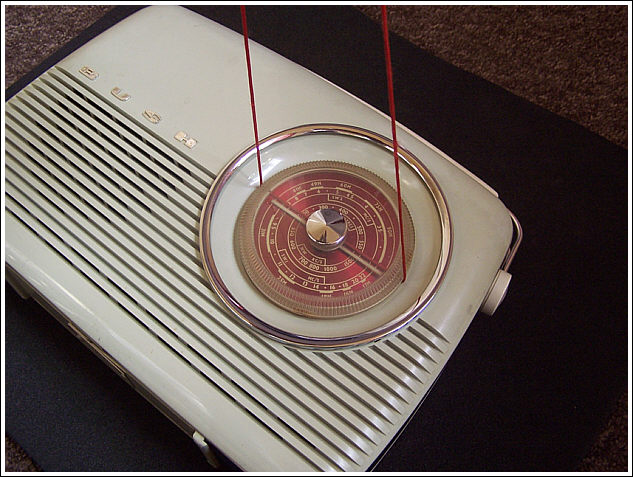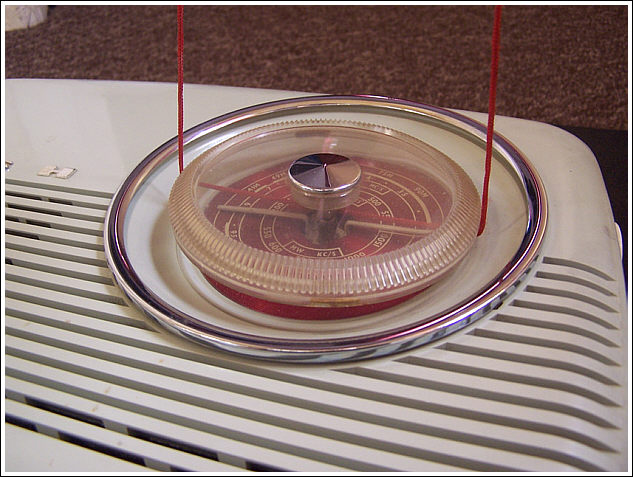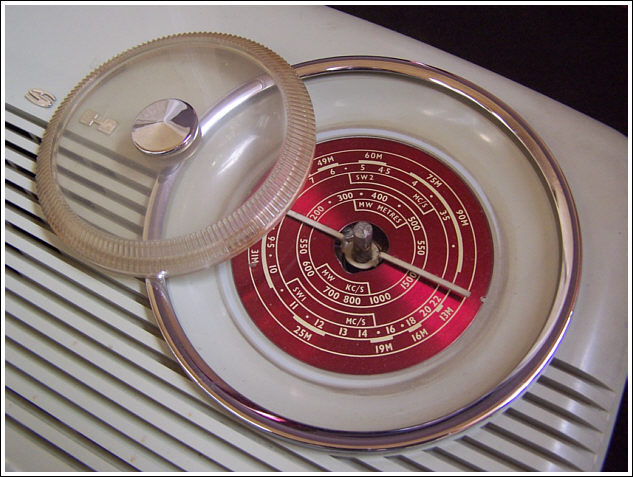
15. Miscellaneous information
Faulty transistors
Models using the Mullard alloy diffusion transistors of the AF11x series, the Mk.II sets and the VTR103 etc, have a common fault of developing internal short-circuits, often between the emitter and shield connections but not exclusively so - it is sometimes possible to cut the shield lead and restore functionality but this can also lead to an increase in noise or cause instability. Replacement of the defective transistor is therefore the preferred option, and the AF12x series transistors are recommended being direct equivalents.
B U S H lettering
On earlier sets the letters on the front are made of solid metal plated with brass or chrome, later models have plastic lettering upon which a chrome coloured coating has been applied - unfortunately this coating is often worn revealing the bare plastic beneath.
Models having a telescopic antenna
The metal escutcheon surrounding the base of the antenna can be found either chrome plated or unplated - Bush seems to have used both types equally on different production runs depending on which type was available.
Removing the circular tuning knob
The easist and safest way I have found without damaging the shaft of the knob is by using the looped cord method. Begin by tieing a length of strong nylon cord into a loop. Turn the tuning knob so that the white pointer is horizontal across the dial. With the fingernails carefully prise up one edge of the knob so that it is possible to slide the cord underneath then position the cord as shown taking care not to snag and damage the white pointer.

With a hand firmly on either side of the cord carefully pull upwards using a very gentle rocking motion from side to side. You will soon feel and see the knob lifting but it may take anything from 10 seconds to a few minutes to come free - take your time, don't force it.

The amount of upward force required should be just enough to enable the knob to gently come off of the shaft - not so much force that it flies across the room when it does so!

Colour changes due to UV exposure
The colour of the plastic used by these Bush models is not UV safe and can be affected by leaving in excessive direct sunlight. To illustrate what can occur the image below shows an example TR82C where the normal blue/green colour of the back cover now only remains along the bottom edge - the rest having changed to a shade of olive green.

Further models?
The list of model types given here may not be exhaustive and there may be other little-known variants out there waiting to be (re)discovered. Any further information regarding such sets not already covered here would be most welcomed.